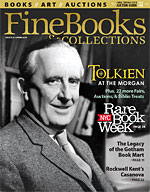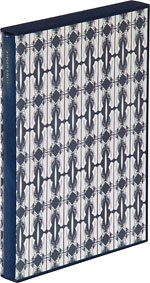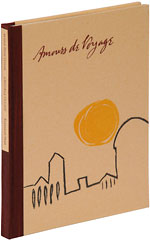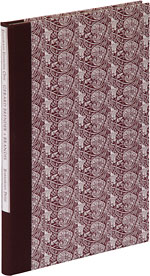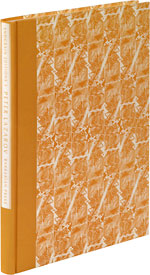Here Come the Barbarians
Barbarian Press of British Columbia By Richard Goodman
Man walks into a bar in East Sutton, Kent. Meets Graham Williams of Florin Press.
“Nice day, isn’t it?” says man, who happens to be Crispin Elsted.
“That it is,” replies Williams.
“Can you teach me about letterpress typography and change my life?”
“I can,” says Williams.
And so he did.
Well, it happened almost like that.
In 1977, Crispin Elsted, and his wife Jan, Canadians from British Columbia, were getting their PhDs in English literature at the University of London. “I had written a poem as a gift for someone and wanted to put it in the form of a small book,” recounted Crispin, “and someone directed us to Graham.” They arranged to meet in aforesaid pub in Kent.
As Williams remembered it: “I was living in a cottage I rented from a friend…in rural Kent….There was little time [and money, as Crispin added] to produce the book in Crispin’s time scale and so I suggested that they help me….The text was set from some borrowed type….I worked late into the evenings for a week with some help from Crispin whilst Jan watched. Later it was to be Jan who took to the printing. At times I would roll out the ink and say ‘down to the pub’ where we had a pint, whilst I let the ink dry out a little on the slab to prevent too much ink squash.”
The Elsteds remained in England for about a year longer, periodically journeying to Williams’ cottage, thirsty for knowledge of this craft. “They watched what I did,” said Williams, “but that was hardly sufficient to call an apprenticeship. They learnt, as I did, by doing it themselves.”
By the time Crispin and Jan were about to leave, ideas of a career teaching literature had been shelved, and they returned to British Columbia with some newly purchased type and a few presses they had bought, determined to make beautiful books for the rest of their lives. Thus the serendipitous birth of Barbarian Press.
I fell in love with the Elsteds—no, no, not what you think. I fell because of their philosophy:
“Unlike those of many printers of fine books,” they have written, “our backgrounds are in literary studies and writing rather than graphic and studio arts, and we make our books to be read, not merely looked at. We feel that nothing should come between the text and the reader….The design and making of beautiful books is only secondarily a matter of self-expression; its first excellence is to serve the author and the reader.”
These words would appeal to any writer. The fact that their background is literary—Crispin is also a poet and essayist—rather than graphic or studio arts has set their priorities. They also have written that “the best typography is effective to the degree that it is unobtrusive, supporting, not supplanting, the principal experience of the reader.” In general, the design and typesetting have been done by Crispin and the presswork by Jan.
Since 1977, Barbarian Press has produced nearly 40 books, two of which are bibliographies of their own work: Utile Dulci: The First Decade at Barbarian Press (1988)—their most requested book—and Hoi Barbaroi: A Quarter Century at Barbarian Press (2004), the latter a sumptuous 150-page volume that is more than a simple listing of books. “It is,” said Crispin, “a corroboration of what we do.” It is also a sophisticated communication to other makers of fine press books: You are not alone. They have published books of poems by writers as diverse as Edmund Spenser (Prothalamion and Epithalamion, 1998); William Shakespeare (Venus and Adonis, 2005); John Keats (The Eve of St. Agnes, 2003); Arthur Hugh Clough (Amours de Voyage, 2007); the contemporary Canadian playwright, John Carroll (Rumor of a Shark, 1999); and even Crispin Elsted (A Natural History of Surprise, 2002). They have also published a remembrance of Leonard Baskin by Barry Moser, and, throughout the years, a number of broadsheets.


